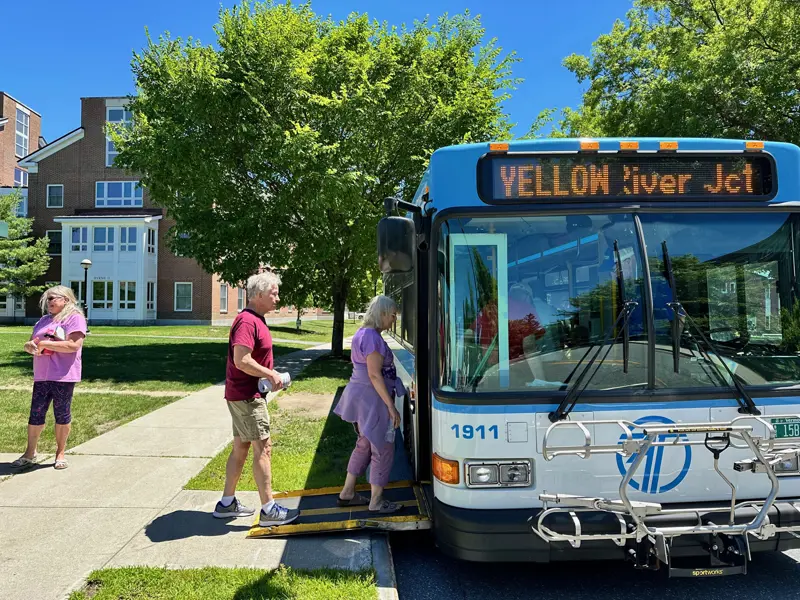The Dollars and Sense of Fare-Free Bus Service
If you’ve ever hopped on an Advance Transit (AT) bus without worrying about exact change, you’ve experienced one of our community’s most impactful — and cost-effective — public services: fare-free transit.
We’ve proudly offered fare-free bus service for over 20 years. It’s a decision that might seem purely generous on the surface, but there’s more to the story. In fact, going fare-free isn’t just about accessibility — it’s also a smart financial strategy that benefits the entire community.
Removing a Barrier — and Watching Ridership Grow
When AT first made the switch to fare-free service, we saw an immediate and significant jump in ridership. That growth told us something important: for many people, even a small fare can be a real barrier to mobility. Eliminating fares meant more people could access jobs, schools, healthcare, and other essential services without worrying about cost.
But accessibility is only one side of the coin. The other? Efficiency and savings.
The Hidden Costs of Charging Fares
What many people don’t realize is that collecting fares comes with a surprisingly high price tag. From equipment to staffing, the infrastructure behind fare collection is costly and complex. By removing fares, we’ve streamlined our operations and redirected resources to what matters most — improving service.
Here’s a look at what we save by going fare-free:
- Farebox purchase and maintenance: Fareboxes are expensive machines that require constant upkeep, repairs, and upgrades. A 2019 study from the Worcester Regional Research Bureau estimated farebox-related costs could total over $850,000 annually — including purchase, maintenance, and payment processing.
- Fare enforcement: Checking fares means hiring personnel, providing training, and dealing with potential conflicts. By removing fares, we eliminate those costs — and create a more welcoming, equitable environment for everyone.
- Cash handling and administration: Collecting cash involves secure pickups, counting, auditing, and banking. These processes demand both time and money that could be better spent improving service.
- Ticketing systems: No fares mean no need for ticket stock, software updates, or maintenance agreements. That’s another chunk of money saved — and more staff hours focused on operations, not administration.
While these individual expenses might not seem enormous, together they add up — and every dollar we save goes directly back into expanding routes, improving frequency, and making transit better for you.
Faster, Smoother Rides
Another unexpected benefit of fare-free transit? Faster service.
Without the need for passengers to search for change or scan passes, buses spend less time at each stop. This may sound small, but over the course of a route — and across hundreds of riders a day — it adds up to serious time savings.
When the Merrimack Valley Regional Transit Authority (MeVa) in Massachusetts went fare-free, they found that boarding times dropped significantly, making buses run more efficiently and stay on schedule more reliably. AT has seen similar benefits: smoother rides and fewer delays.
When Revenue Doesn’t Cover the Costs
Some might wonder: “But aren’t we losing money by not collecting fares?”
Not really. In most transit systems, passenger fares account for only a small percentage of operating costs — often less than 20%, and sometimes even under 10%. And as we’ve seen, the cost of collecting those fares often rivals — or exceeds — the revenue brought in.
By eliminating fare collection, we avoid a financial balancing act that often doesn’t add up. Instead, we can focus on delivering a better, more accessible service to everyone in our community.
Building a Transit System for Everyone
Advance Transit’s fare-free model isn’t just a nice perk. It’s a commitment to equity, efficiency, and smart stewardship of public resources. We believe getting around shouldn’t be a barrier — it should be easy, seamless, and cost-efficient.
By keeping our buses fare-free, we’re not just offering a ride. We’re building a stronger, more connected community — one trip at a time.


